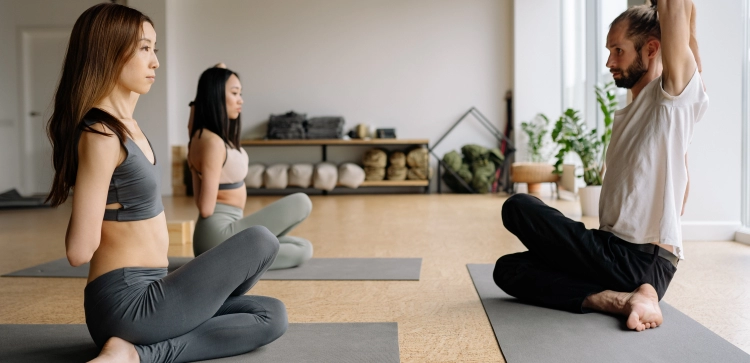What Are The Most Common Climbing-Related Injuries And How To Prevent Them

Climbing is an exhilarating sport that pushes your physical limits, but it also comes with certain risks. Understanding the most common climbing-related injuries is the first step toward preventing them.
- Rock Climbing Is Thrilling And Challenging, But Safety Should Always Come First
- The Strain Of Climbing: Overuse Injuries And How To Avoid Them
- Understanding The Early Signs Of Overuse Injuries
- How Can Climbers Prevent Overuse Injuries?
- What An Effective Climbing Warm-Up Routine Looks Likes
- Are Warm-Up Exercises Essential For Injury Prevention?
- What Role Does Proper Gear And Equipment Play In Safety?
- The Basics Of Climbing Gear Safety
- Conclusion: Knowledge Is Power
Rock Climbing is Thrilling and Challenging, but Safety Should Always Come First
While climbing offers an unparalleled sense of achievement, it's essential to remember that safety should always be a top priority. Climbing-related injuries can occur, but with the right knowledge and precautions, many of these injuries are preventable.
The Strain of Climbing: Overuse Injuries and How to Avoid Them
One of the most common types of climbing injuries falls under the category of overuse injuries. These injuries include tendonitis, muscle strains, and stress fractures. Climbers often push their bodies to the limit, training rigorously and attempting challenging routes. While dedication and determination are admirable qualities, it's equally crucial to listen to your body's signals.
Understanding the Early Signs of Overuse Injuries
Overuse injuries typically develop over time due to repetitive stress on specific body parts. They may start as minor discomfort but can progress to severe pain if ignored. Early signs often include:
- Persistent, dull pain in the affected area.
- Swelling or tenderness.
- Decreased range of motion.
- Aching sensations, even at rest.
When you notice these signs, it's important to give your body the rest it needs and to help it recover. Continuing to push through the pain can exacerbate the injury, leading to more extended recovery times.
How Can Climbers Prevent Overuse Injuries?
Preventing overuse injuries requires a proactive approach. In the next sections of this article, we will share some effective strategies and techniques to minimize the risk of overuse injuries while pursuing your climbing goals, while explaining the basics of why these strategies can help prevent these injuries. The most important takeaway, though, is to listen to your body and not give in to the overly tempting desire to climb more.
Warm-Up Exercises: Essential for Injury Prevention
One of the most critical aspects of injury prevention is a thorough warm-up routine. Climbing places considerable strain on your muscles and tendons, and starting a session without a proper warm-up can increase the risk of injury.
What An Effective Climbing Warm-Up Routine Looks Likes
A good warm-up prepares your body for the demands of climbing, reducing the risk of strains and sprains. However, an effective warm-up routine depends on each climber, as everyone is different and may need to warm up differently. For this reason, providing a warm-up routine that fits everyone may be difficult, but here are some options to keep in mind when doing your warm-up:
- Light cardiovascular exercises to increase blood flow.
- Dynamic stretches to improve flexibility.
- Specific exercises that target the muscle groups used in climbing.
- Slow and controlled climbing on easier routes (A personal favorite)
Are Warm-Up Exercises Essential for Injury Prevention?
You might wonder why warm-up exercises are so crucial for injury prevention in climbing. Warm-ups serve several essential purposes:
- Increased Blood Flow: Warm-ups increase blood flow to your muscles, providing them with essential nutrients and oxygen.
- Improved Flexibility: Dynamic stretches during warm-ups improve flexibility, allowing for a broader range of motion.
- Mental Preparation: Warm-ups mentally prepare you for the challenges ahead, helping you focus on your climbing goals.
Incorporating a warm-up routine into your climbing sessions not only reduces the risk of injuries but also enhances your overall performance on the rock.
What Role Does Proper Gear and Equipment Play in Safety?
Climbing gear and equipment play a pivotal role in your safety. Whether you're tackling a multi-pitch route, bouldering, or sport climbing, choosing the right gear and maintaining it properly can protect you from accidents and injuries.
The Basics of Climbing Gear Safety
Understanding the gear safety essentials includes:
- Regular Inspection: Thoroughly inspecting your gear before each climbing session ensures that it's in good condition.
- Proper Use: Using each piece of gear correctly is vital for your safety and the safety of your climbing partners.
- Maintenance: Regularly maintaining your gear, such as ropes and carabiners, extends their lifespan and ensures reliability.
Imagine your climbing gear as a silent partner. It's always there, offering support and security, but only if you take care of it. Neglecting gear safety is akin to neglecting your climbing partner's safety, and it's an aspect of climbing that should never be underestimated.
Choosing the right gear for your climbing style, ensuring its proper use, and maintaining it diligently are all part of responsible climbing. Your gear can mean the difference between a safe ascent and an unfortunate accident.
Conclusion: Knowledge is Power
In climbing, education plays a pivotal role in injury prevention. Climbers should not only focus on developing climbing techniques but also on understanding and implementing injury prevention strategies.
Being knowledgeable about injury prevention techniques empowers climbers to make informed decisions that can significantly reduce the risk of accidents and injuries.
Listen To Your Body
One of the best ways to prevent many climbing-related injuries is to listen to your body. While this sounds simple enough, it's not as easy to actually do. It's not always easy to do what your body is telling you to do, which is usually to rest, but it is probably one of the best things you can do for your body and for your climbing.




